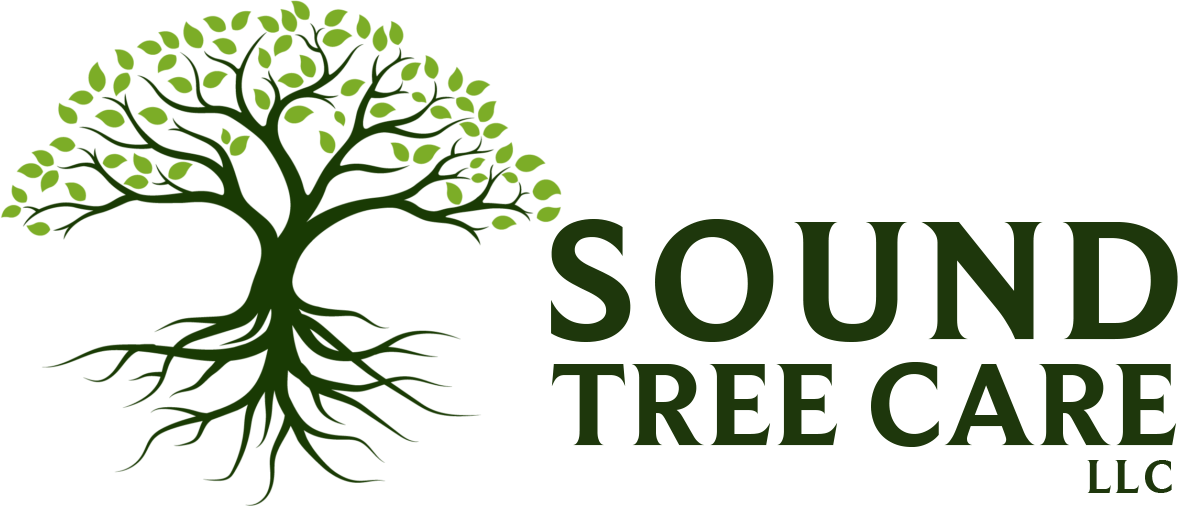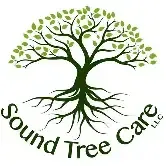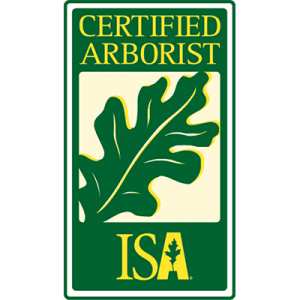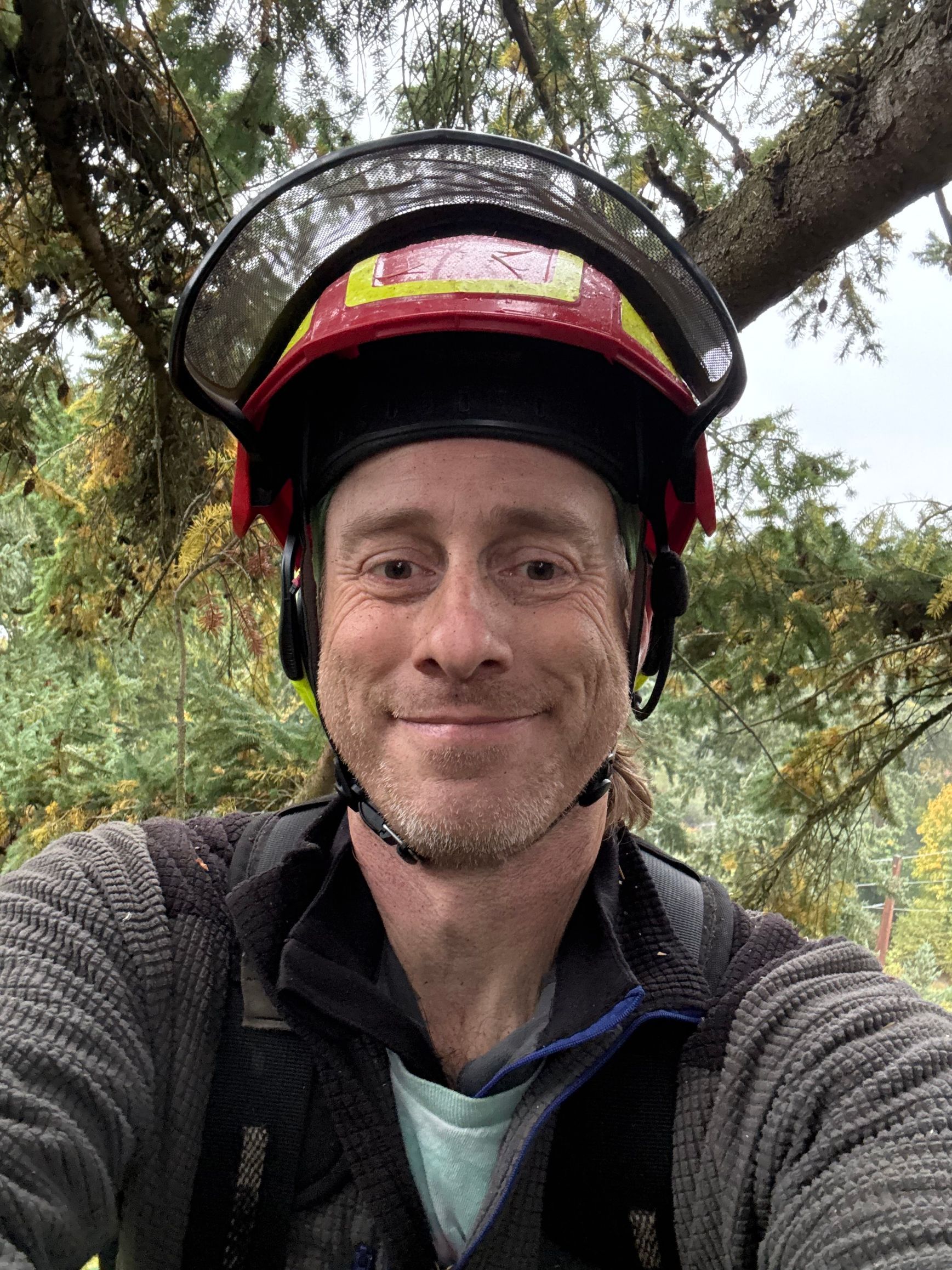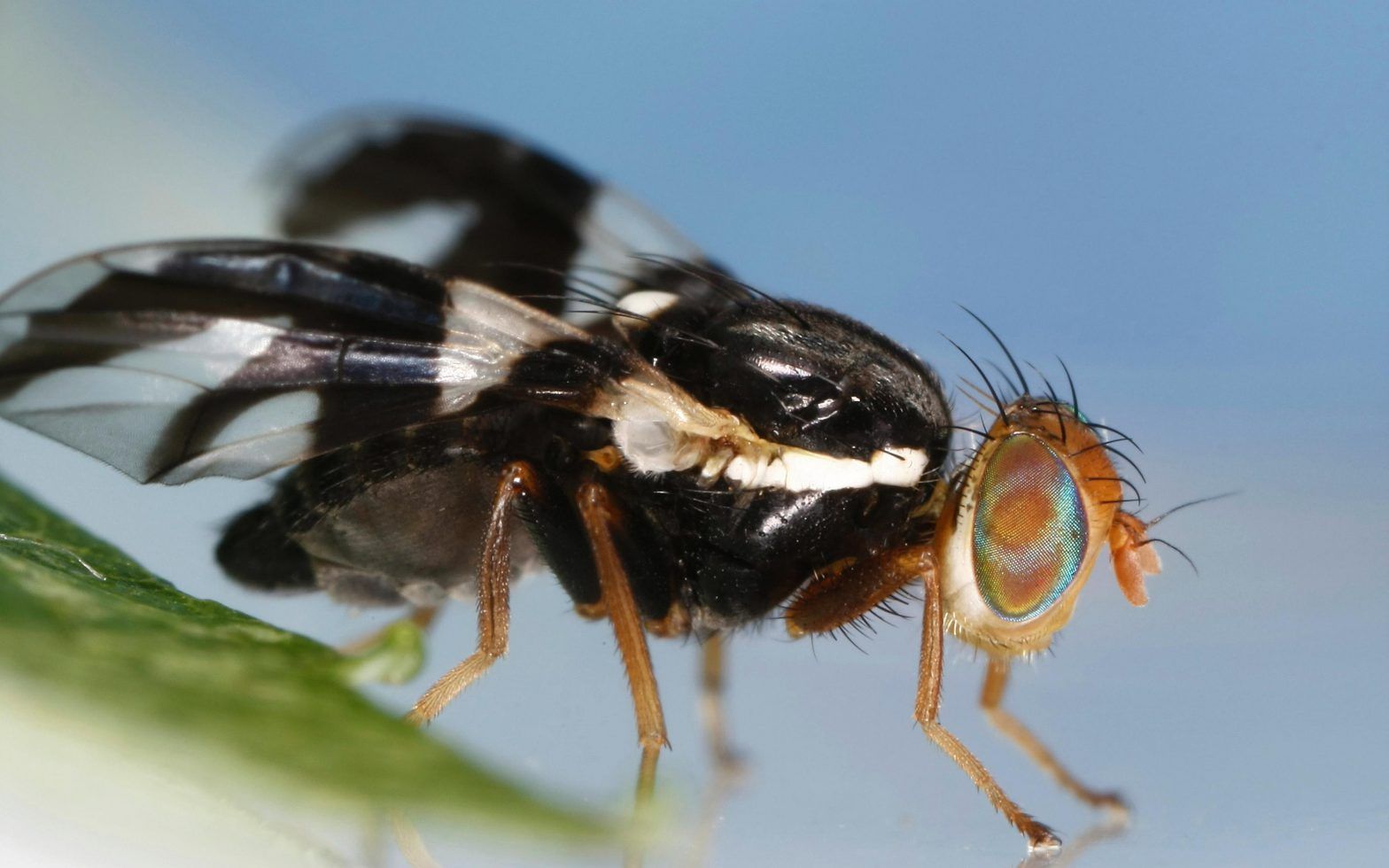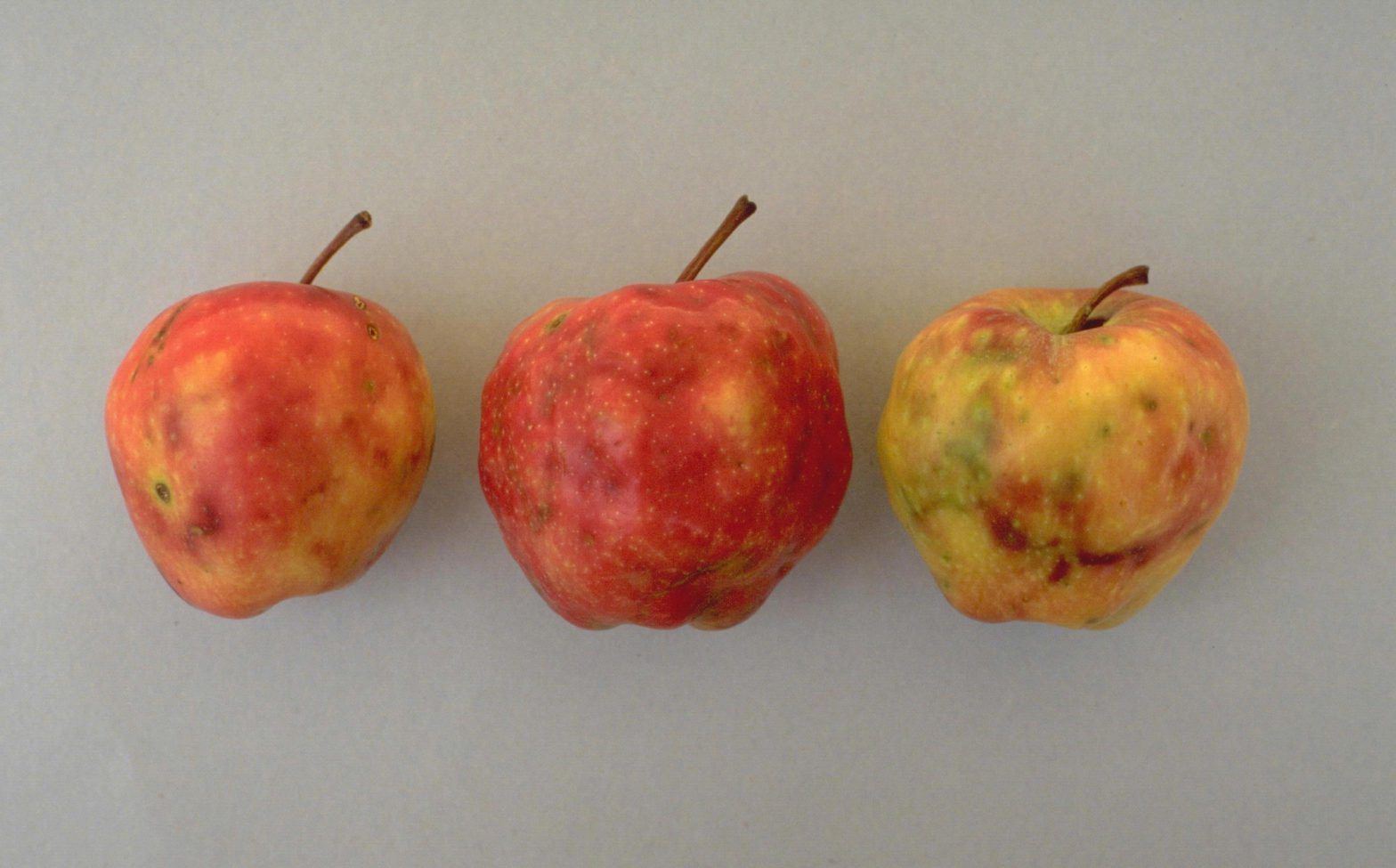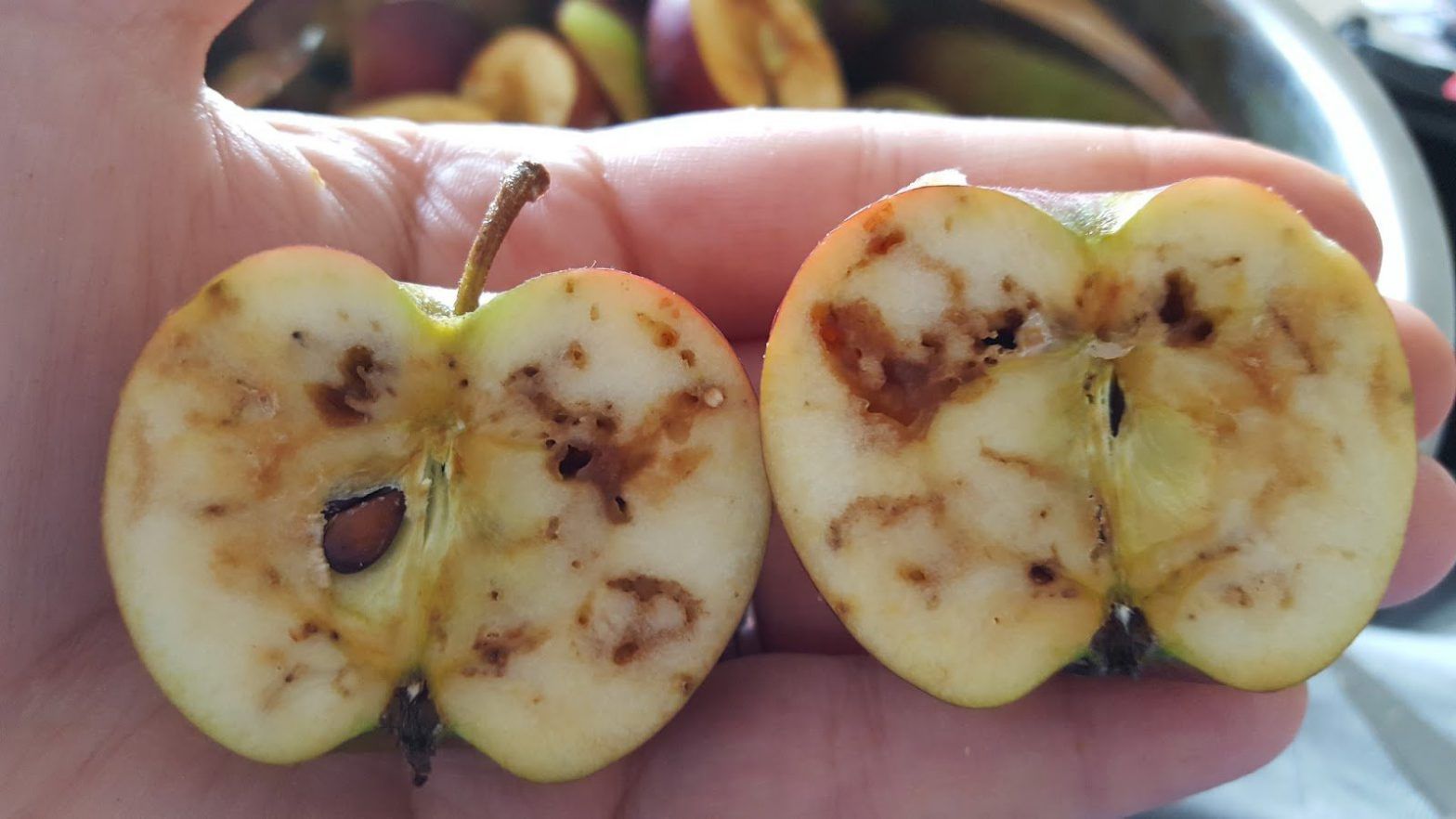4 Invasive Insects That Threaten Your Seattle Trees
Written By: Eric Ledford
ISA Certified Arborist – PN-9290A
ISA Qualified Tree Risk Assessor (TRAQ)
What’s Eating My Trees? - 4 Invasive Insects That Threaten Your
Seattle Trees
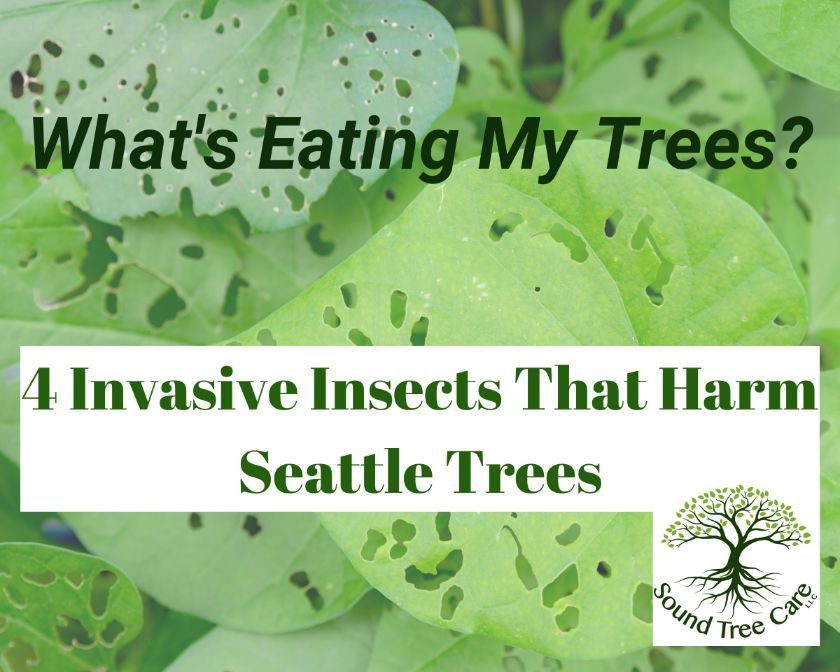
Springtime in Seattle is a beautiful time of year. Our trees come out of dormancy. The aroma of flowers fills the air, and everything becomes lush and green. When spring is in full bloom, the pests that threaten them also emerge.
While there are plenty of domestic insects to worry about, invasive species have no predators. They can destroy our trees, plants, and forests on a massive scale if not monitored closely and aggressively controlled. This article discusses 4 of the most destructive invasive insects that threaten our Seattle trees, what to look for, and what to do.
4 Invasive Insects That Can Threaten Seattle Trees: What To Look For And What To Do
Characteristics
- Apple maggots are cream-colored, maggot-shaped larvae that grow up to 1/4 inch when mature.
- Adults have black bodies with banded wings and black markings.
- It is challenging to identify the species. To identify species, contact the WISC or a local master gardener or arborist.
- Unlike other insects that feed on the core, Apple Maggots feed on the flesh.
Considered the worst pest in the world and the greatest threat to Seattle apple trees, The Apple Maggot (Rhagoletis pomonella) is a fruit fly species native to eastern North America. The adult female flies lay their eggs on the surface of the apple fruit. When the eggs hatch, the
larvae burrow into the flesh of apples and other fruit and feed on it,
causing softening and decay, making it unsuitable for human consumption.
While Apple Maggots primarily feed on apple fruits, they also feed on other fruit-bearing trees in the Seattle area, including cherry and pear trees.
How Do I Prevent Apple Maggots From Ruining My Fruit?
Taking steps to control their population is critical to prevent damage from Apple Maggots. These steps can include removing infested fruit from trees, using insecticides, and using traps to catch adult flies before they lay eggs.
It is also essential to follow proper fruit management practices, such as
pruning trees to promote air circulation and regular fertilization, to help keep trees healthy and better able to resist insect damage.
If you suspect Apple Maggots are eating the fruit on your trees and shrubs,
report it to the
WISC immediately.
Remove affected fruit by following the quarantine procedures provided, and
do not transport infested apples.
2. Brown Marmorated Stink Bug
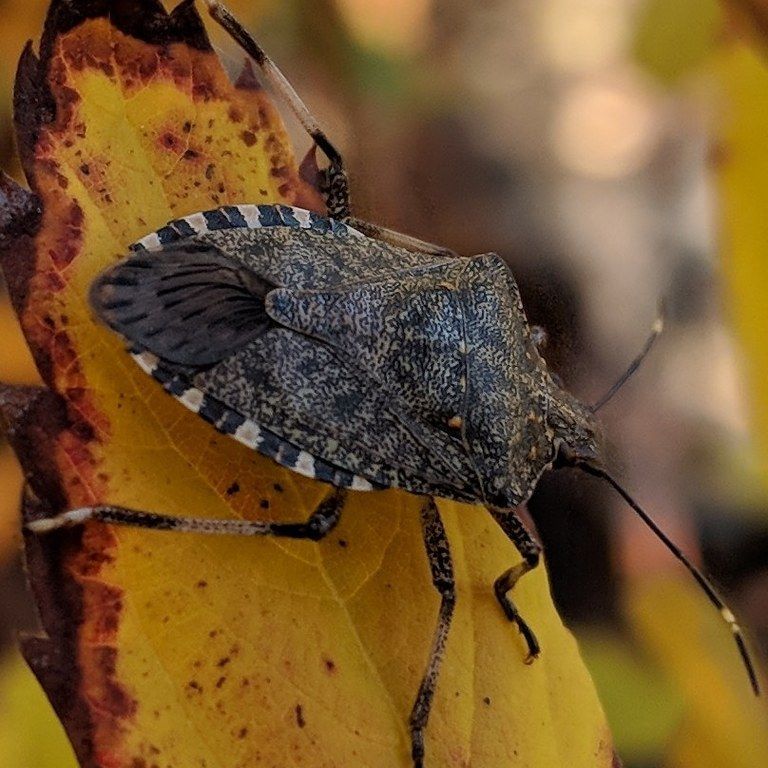
Adult Marmorated Stink Bug. Image courtesy of the
WISC.
Characteristics
- Mottled brown and shield-shaped body, 1/3 to 2/3 inches long.
- Antennae, abdomen, and legs have alternating dark and light bands.
- The edge of the shoulder is smooth when looking down at it.
- It emits a pungent odor when threatened or killed, hence its name.
The Brown Marmorated Stink
Bug (Halyomorpha halys) is an invasive stink bug species found in Seattle and other parts of the Pacific Northwest. This insect is originally from Asia and was first detected in the United States in Pennsylvania in 2001. Since then, it has spread to many other parts of the country, including the Pacific Northwest.
The Brown Marmorated Stink Bug can be a nuisance pest in homes, as it tends to enter buildings in the fall to seek shelter for the winter. When disturbed or threatened, the stink bug emits a
foul odor, which can be unpleasant. However,
its potential to cause significant and costly damage to all kinds of vegetation and crops is most concerning.
The Brown Marmorated Stink Bug can affect various Seattle crops, including apples, pears, vegetables, landscaping, and berries. The stink bug feeds by piercing the skin of fruits and vegetables and
sucking out the juices,
causing them to rot.
How Do I Prevent A Marmorated Stink Bug Infestation?
While pesticides can control these destructive pests, they also harm helpful insects like ladybugs. The WISC typically employs pheromones and light traps to capture and manage Marmorated Stink Bugs.
Monitoring crops regularly and sealing up any cracks or openings in buildings to prevent the stink bugs from entering your home or business can dramatically reduce your chances of infestation.
If you suspect a Marmorated Stink Bugs infestation, immediately report it to the
WISC.
3. Spongy Moth
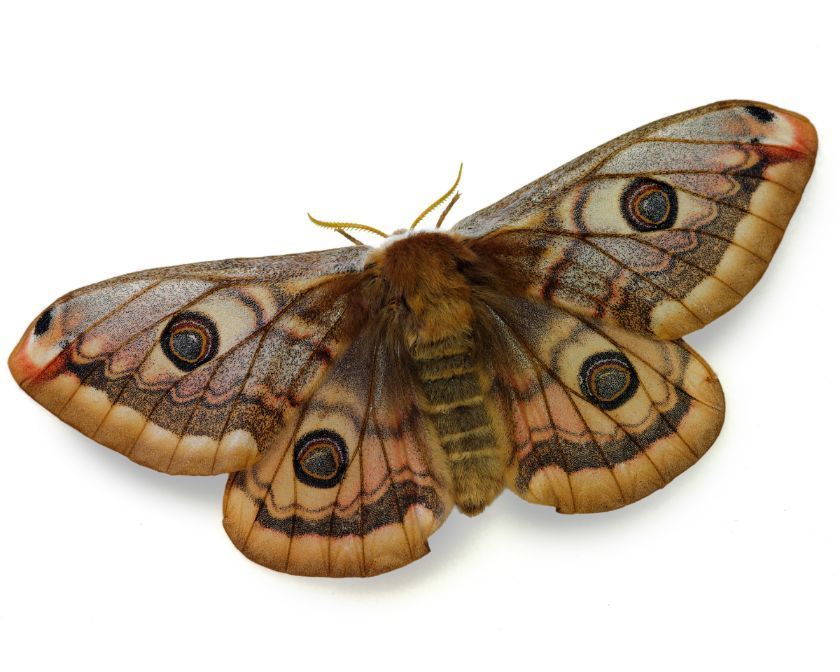
Adult Asian Spongy Moth. Image courtesy of Canva.
Characteristics
- Spongy moth adult males are light brown with a wing-span of about 1 ½ inches and broader depending on the species. Lymantria dispar moth females are white with dark zigzags on the wings and do not fly.
- The females lay egg masses of a hundred or more on branches or other sheltered places. The eggs are buff-colored when freshly laid and will pale as they age.
- Mature larvae are covered in light-colored tufted hairs with five pairs of blue bumps and six pairs of red bumps down the back.
- The pupae (or resting stage between the caterpillar larva and adult moth) is a dark brick red, usually found under tree bark, crevices, or other protected areas.
The Asian Spongy Moth, also known as the Asian Gypsy Moth, is an invasive species that causes significant damage to Seattle trees. Almost twice the size of the familiar European Spongy Moth, its larvae feed on leaves, weakening the tree and making it more susceptible to disease and other pests. Severe infestations can defoliate trees and cause significant damage to forests, urban trees, and other vegetation.
Spongy Moths are one of the worst forest pest insects, chewing through the leaves of more than 500 tree and shrub species, causing incredible damage to the environment and economy. The State of Washington spends on an average year, about $1 million. Of that, about half is provided by the federal government. Approximately 75 percent of spongy moth control money is spent on summer trapping, and 25 percent on eradication.
How Do I Prevent A Spongy Moth Infestation?
People introduce Spongy Moths, so avoid bringing back eggs on your car, recreational vehicles, bikes, and outdoor supplies, when traveling to infested areas. Do not remove or damage traps.
It's important to note that the Asian Spongy Moth is a regulated pest, and strict regulations are in place to prevent its spread. If you suspect that you have encountered this pest,
do not attempt to move any potentially infectious materials, as doing so could spread the problem to new areas.
Instead, report it to the Washington Invasive Species Council (WISC) on their
website or
Apple and
Android devices app. They can provide you with specific instructions on how to collect and submit specimens for identification. They can advise you on appropriate steps to prevent the moth's spread.
4. Spotted Wing Drosophila
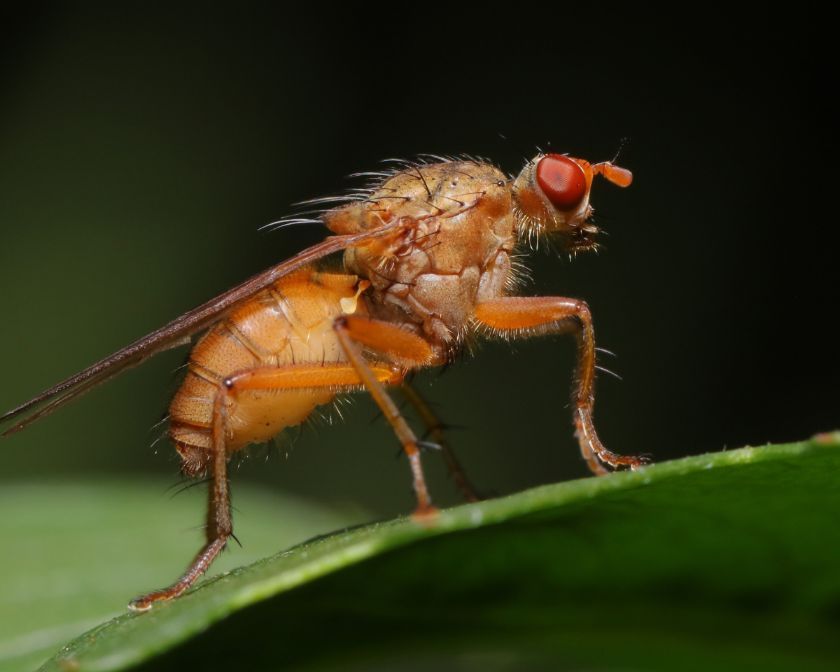
Close up of an Adult Spotted Wing Drosophila, courtesy of Canva.
Characteristics
- Tan body, red eyes
- Males have dark spots on the ends of their wings; females are more difficult to identify.
- Larvae start small and typically go unnoticed until the fruit becomes rotten, but small dark spots on fruits and rapid molding may indicate their presence.
- Small dark tan pupae often may be seen protruding from the surface of the infested fruit.
The spotted-winged drosophila (Drosophila suzukii) is a small vinegar fly, also known as the cherry fruit fly or cherry vinegar fly. It is native to Southeast Asia and has been in Seattle and the Pacific Southwest
since 2009.
The spotted-winged drosophila is a
severe pest of soft-skinned fruit crops such as cherries, raspberries, blackberries, blueberries, and strawberries. Unlike other vinegar flies, which only attack rotting or damaged fruit, the spotted-winged drosophila can
lay eggs in ripening fruit, causing significant damage to crops.
The female fly has a serrated ovipositor that allows her to lay eggs under the fruit's skin, where the larvae
feed on the flesh,
causing the fruit to soften and rot.
Controlling spotted-winged drosophila can be challenging, as it has a
rapid reproductive cycle and can develop
insecticide resistance.
How Can I Prevent It From Harming My Fruit Trees?
Washington employs Integrated pest management (IPM) strategies that combine cultural practices, such as sanitation and crop rotation, with chemical and biological control methods to manage this pest. If you suspect this fruit-piercing pest has damaged your fruit, report it to the WISC.
To help keep them from destroying your fruits, you can set up barriers, apply pesticides, sanitize, and avoid planting other hosts, such as Himalayan Blackberry nearby.
Conclusion
There are existing and emerging invasive species threatening our Seattle plants and delicate ecosystems we must proactively report and aggressively control to keep your trees, gardens, forests, and waterways healthy.
You can visit the Washington State University Extension
website to learn more about the invasive species in Seattle, what to look for, and what to do. They provide updated information, identification guides, and other resources to help you prevent these pests from eating your trees and destroying your gardens and fruit.
If you suspect insects are harming your trees, a local arborist can help you identify whether it’s an invasive or native species and help you determine the most effective methods of eliminating and managing infestations before irreparable damage occurs.
We are a local tree care service with an arborist on staff who can help you identify what's eating your trees and what to do about it.
Sound Tree Care is a top-rated, licensed tree care company with a certified arborist on staff serving SeaTac, Seattle, and the surrounding communities. Approved by the City of Seattle and Burien, our tree care specialists can help you keep your trees healthy and strong with regular tree pruning, preventative maintenance, removal, and disease treatment services.
